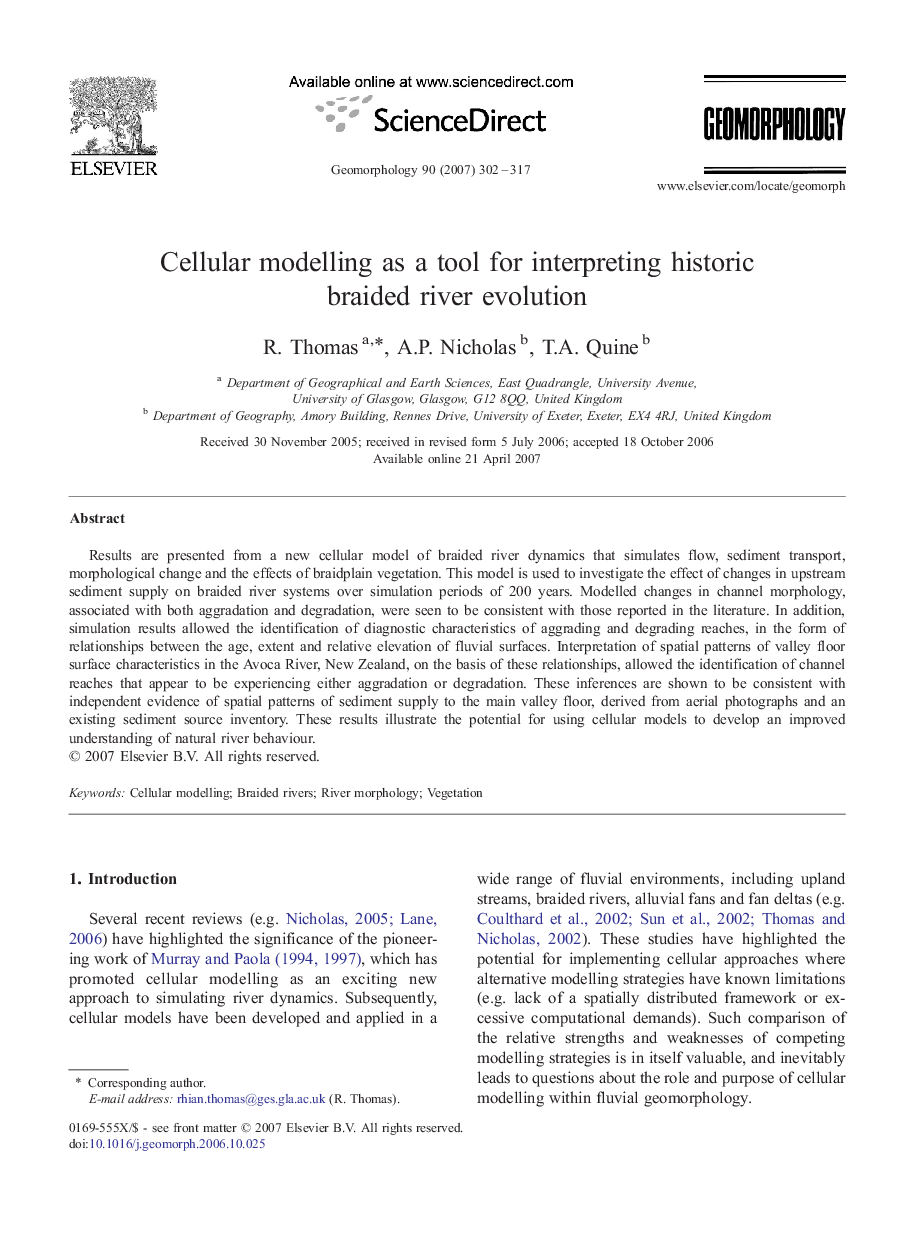| Article ID | Journal | Published Year | Pages | File Type |
|---|---|---|---|---|
| 4687040 | Geomorphology | 2007 | 16 Pages |
Results are presented from a new cellular model of braided river dynamics that simulates flow, sediment transport, morphological change and the effects of braidplain vegetation. This model is used to investigate the effect of changes in upstream sediment supply on braided river systems over simulation periods of 200 years. Modelled changes in channel morphology, associated with both aggradation and degradation, were seen to be consistent with those reported in the literature. In addition, simulation results allowed the identification of diagnostic characteristics of aggrading and degrading reaches, in the form of relationships between the age, extent and relative elevation of fluvial surfaces. Interpretation of spatial patterns of valley floor surface characteristics in the Avoca River, New Zealand, on the basis of these relationships, allowed the identification of channel reaches that appear to be experiencing either aggradation or degradation. These inferences are shown to be consistent with independent evidence of spatial patterns of sediment supply to the main valley floor, derived from aerial photographs and an existing sediment source inventory. These results illustrate the potential for using cellular models to develop an improved understanding of natural river behaviour.
